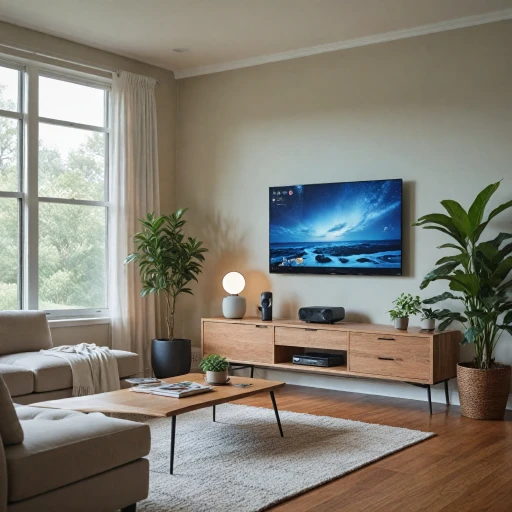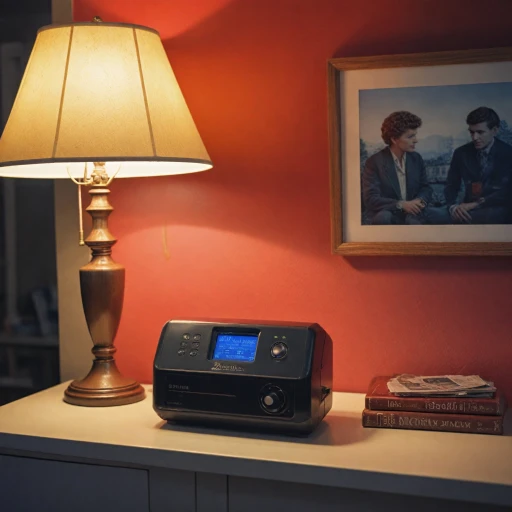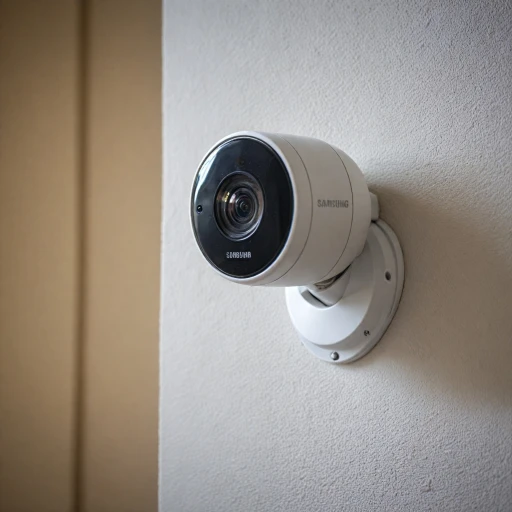
Understanding Door Alarm Sensors
Exploring the Basics of Door Alarm Sensors
Door alarm sensors have become an integral part of modern home security systems, providing homeowners with an effective way to monitor entry points such as doors and windows. These devices are designed to detect when a door or window is opened without authorization and alert the homeowner, thus enhancing the overall safety of the house. Most door alarms function through a simple yet efficient mechanism. They often comprise two primary components: a contact sensor and a magnet. The contact sensor is typically installed on the door or window frame, while the magnet is attached to the door or window itself. When the door or window is closed, the magnet keeps the contact sensor closed, maintaining the circuit. When the door or window is opened, the magnetic connection is broken, triggering the alarm system to send an alert. Many modern door sensors also offer wireless connectivity, allowing them to integrate seamlessly with existing security systems. These wireless door alarms often feature battery-powered operation, reducing the need for extensive wiring during installation. This convenience, however, necessitates regular checks on the battery life to ensure continuous protection. The safety mechanism offered by door alarm sensors is especially effective when combined with security cameras. By linking door alarms with cameras, you can enhance your home security strategy; while the sensor detects any unauthorized entry, the camera allows you to visually confirm and assess the situation quickly. This integration can be particularly useful for access control, providing real-time evidence if any security breach occurs. For more insights on leveraging security cameras to enhance safety, you can explore enhancing home safety with motion-activated security cameras, which can offer additional perspectives on optimizing your home’s security system. The market offers a wide range of door alarms, with various features and price points depending on the specific needs and preferences of the homeowner. Brands like Honeywell offer a spectrum of product options that can cater to different security requirements, while platforms like Amazon provide access to customer reviews that can guide purchasing decisions. It's important to ensure that the sensors and alarms you choose are compatible with other smart home devices for a comprehensive security system.Benefits of Integrating Door Alarm Sensors with Security Cameras
Harnessing the Power of Door Alarm Sensors and Security Cameras
When it comes to enhancing home security, the combination of door alarm sensors with security cameras provides a robust approach. By working together, these devices offer multiple layers of protection, ensuring that unauthorized access is detected, recorded, and responded to in real-time.
One of the key benefits of integrating these technologies is the increased ability to monitor entrances like doors and windows. Door alarms act as a first line of defense, capable of alerting homeowners of unauthorized entry through a sound or notification. Upon detecting a door open or window opened, the sensor triggers an alert, prompting security cameras to start recording.
Many door alarms and cameras available today are equipped with smart features. These include wireless connectivity and remote access via smartphones or other devices. Being able to monitor your home security system from anywhere is a major advantage, especially when you are away. Reviews suggest that systems offering real-time alerts are favored by users looking for convenience and quick response times.
An added advantage is the flexibility offered by wireless door sensors and cameras, making installation simpler compared to wired systems. These products typically utilize magnet-based contact sensors, which are reliable and easy to place on any door or window. Wireless options also tend to have a reasonable battery life, although it varies by product. For instance, well-regarded sensors by companies like Honeywell often come highly recommended for their dependability.
Portals like Amazon offer a variety of these sensor and camera combos, providing options at different price points. While evaluating these products, it's important to consider list prices, battery specifications, and any additional features that may be valuable for your specific security needs.
For an even better understanding of maximizing your home's security, you might explore additional resources on how to enhance your home security with reliable systems, such as this guide on driveway alarms.
Types of Door Alarm Sensors
Various Models and Designs to Suit Your Needs
When it comes to door alarm sensors, there is a wide range of products available in the market designed to cater to different security needs and preferences. Each model has its unique features, and the choice will depend on what you require for your home security system.- Contact Sensors: These are the most common types. They work with a magnet on a door or window and a contact attached to the frame. When the door opens, the magnet moves away from the contact, triggering the alarm. This type is available as wired or wireless models, making them easy to install and maintain.
- Smart Door Sensors: These blend traditional functions with modern technology. They notify you via smartphone apps when the door or window is opened, allowing for real-time monitoring. Integration with systems like Amazon Alexa means you can operate them with simple voice commands.
- Wireless Door and Window Alarms: While these alarms function similarly to contact sensors, they offer the advantage of easier installation due to the elimination of complicated wiring. Battery life is an important consideration here; look for a model with long-lasting power to avoid frequent replacements.
Tailoring to Your Home's Specific Needs
It's key to consider the specific needs and layout of your home when selecting an alarm sensor. Some homes may benefit from a security window sensor that focuses solely on arm and disarm functions for the windows alone. Others might need an extensive system combined with surveillance cameras for enhanced monitoring. Moreover, understand that price can vary based on features and brand. High-end models often come from recognized names in the industry, offering additional functionalities with their products, such as the ability to integrate with broader access control systems. Choosing the right door sensor is not just about meeting today's security needs but anticipating future ones as well. Reading reviews and details about different options can help make a more informed decision that aligns with your safety goals.Installation Tips for Door Alarm Sensors
Seamless Installation Tips for Effectiveness
Installing door alarm sensors can greatly bolster your home security when done correctly. To ensure maximum efficacy, consider these practical tips derived from user reviews and expert guidance:- Placement Importance: It’s crucial to position the sensors where the door or window swings open. The sensor door or contact sensor should align perfectly to activate the alarm upon any unauthorized entry. Installing door alarms at strategic access points, like front doors and basement windows, maximizes security.
- Wireless Convenience: Opting for wireless door sensors simplifies the installation process, eliminating the need for extensive wiring. Wireless systems are also versatile, allowing repositioning as needed, particularly beneficial in rented properties or during home renovations.
- Magnet Location: For door contact and window sensors, proper alignment with magnets is key. Ensure that the alarm sensor is positioned in proximity to its corresponding magnet, maintaining consistent contact to detect any door or window opening.
- Battery Reliability: Consider the battery life of your chosen product. Reading reviews on platforms like Amazon can provide insights into the battery performance of various sensors. Regularly check and replace batteries to ensure the alarms are operational at all times.
- Smart Integration: Modern security systems often come with smart features, allowing integration with home automation systems. Connecting your door window sensors with smart hubs can enable remote monitoring and control, enhancing overall home safety. For an advanced setup, systems by Honeywell offer reliable integration solutions.
- Sensitivity Adjustments: Most door alarms allow customization of sensitivity levels. Adjust the sensitivity of the sensor according to high-traffic areas to minimize false alarms while still maintaining robust security.
Common Challenges and Solutions
Troubleshooting and Solutions for Door Alarm Sensors
When integrating door alarm sensors into your home security system, it's normal to encounter some challenges. Understanding and overcoming these obstacles will ensure smooth operation and optimal protection.- Common Misalignments: One typical issue with contact sensors is misalignment. Ensure the sensor and magnet are properly aligned by adjusting their positions. A gap larger than 1/4 inch can prevent the system from triggering.
- Weak Signals in Wireless Systems: Sometimes wireless door sensors may experience weak signals, especially in larger homes. Place the alarm within the recommended range and avoid obstructions such as metal doors or thick walls.
- Battery Life Concerns: If the alarms trigger erratically, consider checking the battery life. Many systems offer battery alerts, but regular checks are advisable for systems without this feature. Plan for routine battery replacements to avoid unexpected failures.
- Interference with Signal: Appliances or electronic devices can interfere with wireless door alarms. To minimize this, keep the alarm system away from routers, microwaves, and other potential sources of electromagnetic interference.
- Installation Errors: Incorrect installation can lead to false alarms or non-responsive systems. Ensure you follow the installation tips closely, as outlined in other sections, and consider professional installation for complex setups.
- User Error: Misunderstanding system operations is a common issue. Ensure all household members understand how to arm/disarm the system properly to reduce false alarms.
Choosing the Right Door Alarm Sensor for Your Home
Identifying Your Needs and Budget Considerations
Choosing the perfect door alarm sensor for your home involves understanding your specific security needs and budget. Start by assessing the number of entry points you wish to secure, including door and window options. This helps in determining the quantity of sensors required.Budget is also a crucial factor. While there are many affordable options on the market, such as the vast selection available on Amazon, more advanced systems offer features like wireless connectivity and smart integration, which may lead to higher list prices. Consider the long-term benefits versus the initial cost to make an informed decision.
Evaluating the Features
When selecting a door alarm sensor, it's essential to weigh the features offered by different products. Look for sensors with reliable battery life, as frequent replacements can become cumbersome. Wireless options are beneficial for ease of installation and flexibility.Smart home integration is another feature worth considering. Many modern alarm systems can connect to a larger smart home security system, providing better control and monitoring capabilities. Products that offer a door chime function can notify you of a door open event, adding an extra layer of security without continual noise alarms.
Reading Reviews and Gathering Opinions
Reading user reviews is a valuable step in the decision-making process. Customers often highlight product strengths and mention potential issues, providing a real-world perspective on performance. For example, reviews on brands like Honeywell can reveal insights into everything from alarm reliability to user-friendliness.Be sure to consider the product’s compatibility with additional security window or door alarm sensors within your existing security system. Opt for contact sensors that easily integrate with door and window installations to enhance overall home security without causing disruptions.
Testing and Deployment in Your Home
Once you've selected a door alarm sensor that fits your needs and budget, it's time for installation. Testing your sensors thoroughly after installation ensures they function correctly, providing the security you intend to achieve. Ensure all doors and windows equipped with sensors respond promptly and accurately to any unauthorized access attempts.In cases where you experience challenges, reflect on the installation tips and potential solutions discussed previously. Choosing the right door alarm sensor ensures peace of mind, knowing your home and loved ones are protected effectively and efficiently at all times.













